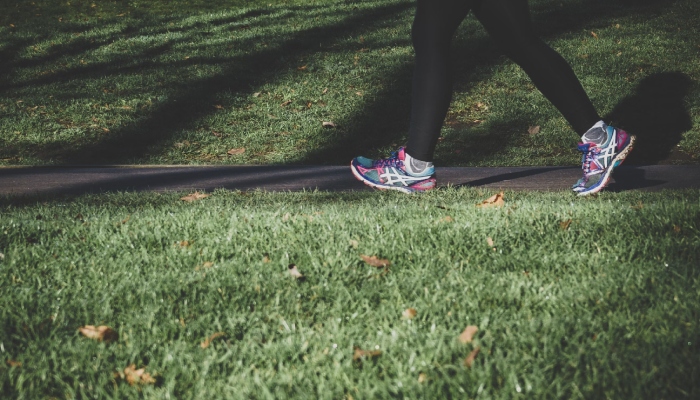[ad_1]

For generations, residents of the sun-soaked Mediterranean region have made a habit of rising from their leisurely meals to take a stroll, often converging at the town square to connect with neighbours and engage in social interactions.
This practice of walking is deeply ingrained in their lifestyle and is even recognised as a fundamental aspect of the exceptionally healthy Mediterranean diet.
Studies have consistently shown that the Mediterranean diet can lower the risk of diabetes, high cholesterol, heart disease, stroke, and some forms of cancer.
Additionally, it contributes to stronger bones, enhanced brain health, the prevention of dementia and depression, and aids in achieving and maintaining a healthy weight.
Now, there’s another compelling reason to incorporate a post-meal walk into your routine – it may help regulate your blood sugar levels. The beauty of this practice lies in its simplicity; a brief stroll lasting as little as two to five minutes after eating can make a significant difference, as revealed by a 2022 study published in the journal Sports Medicine.
Although simply standing up after a meal can be beneficial, walking provides even greater advantages. Aidan Buffey, a coauthor of the study and a doctoral student in the Department of Physical Education and Sport Sciences at the University of Limerick in Ireland, explained, “Intermittent standing breaks throughout the day and after meals reduced glucose on average by 9.51% compared to prolonged sitting.
However, intermittent light-intensity walking throughout the day saw a greater reduction of glucose by an average of 17.01% compared to prolonged sitting.” He further emphasised, “This suggests that breaking prolonged sitting with standing and light-walking breaks throughout the day is beneficial for glucose levels.”
The meta-analysis, conducted in February 2022, examined seven studies that investigated the effects of sitting, standing, and walking on insulin and blood sugar levels in the body. Participants in these studies were encouraged to either stand or walk for two to five minutes every 20 to 30 minutes throughout a full day.
Buffey noted, “Between the seven reviewed studies, the total activity time throughout the observation was roughly 28 minutes with the standing and light walking breaks lasting between 2 to 5 minutes.”
While standing was found to be better than immediate sitting when it came to blood sugar levels, it did not significantly impact insulin levels in the bloodstream. Conversely, taking a short walk after eating led to a more gradual rise and fall in blood sugar levels and stabilised insulin levels better than either standing or sitting.
Maintaining stable blood sugar levels is essential for overall health, as abrupt spikes and drops can increase the risk of diabetes and heart disease, according to experts.
Studies have indicated that blood sugar levels tend to spike within 60 to 90 minutes after a meal, making it advisable to engage in physical activity shortly after eating to mitigate these fluctuations.
But how does movement accomplish this?
Muscles require glucose for energy, and physical activity assists in removing excess sugars from the bloodstream. This explains why many athletes rely on carbohydrate loading before events like marathons or races.
For those seeking more benefits than just blood sugar regulation, it’s advisable to meet the minimum physical activity standards recommended for Americans: 150 minutes of moderate-intensity physical activity per week, along with two days of muscle-strengthening exercises.
The US Centers for Disease Control and Prevention emphasises that individuals who engage in about 150 minutes of physical activity per week have a 33% lower risk of all-cause mortality compared to those who are physically inactive.
In simple terms, dedicating roughly 21.43 minutes each day to physical activity can reduce the risk of mortality from any cause by one-third. It’s an effort well worth making, wouldn’t you agree?
[ad_2]
Source link



